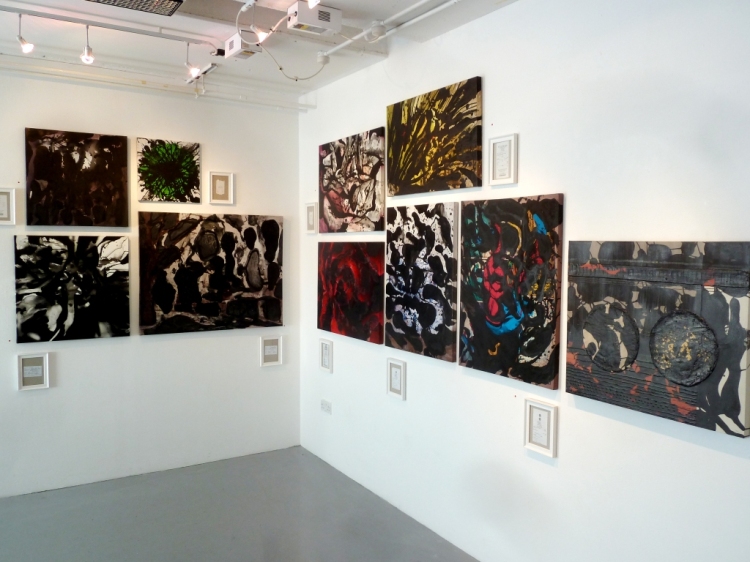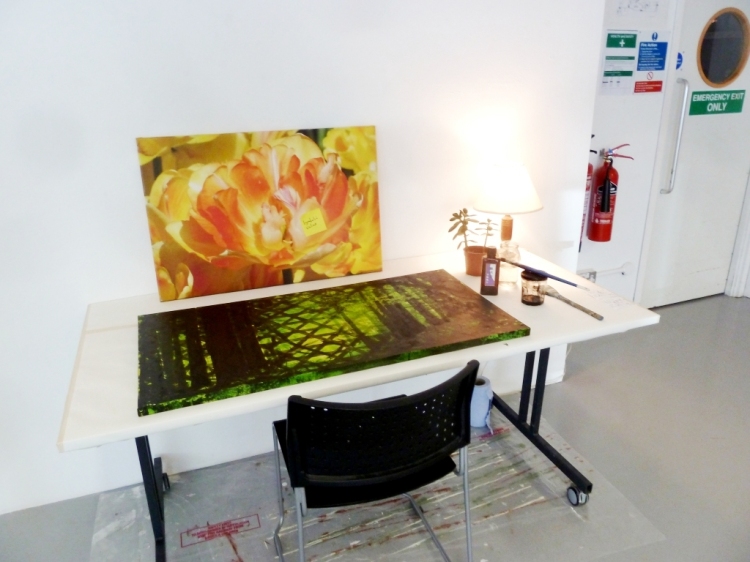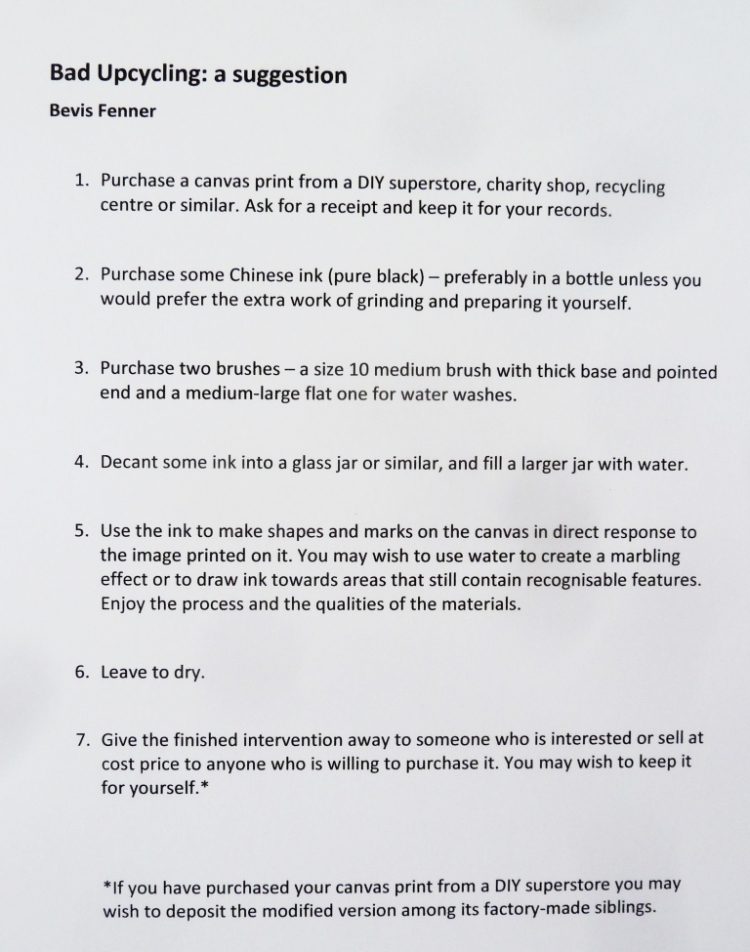One of the key themes in my art is the idea of ‘value’ – of materials, of subject matter, of me as an artist, and so on. I was therefore pleased to be invited to the recent Art & Value conversation that formed part of Sites of Conversation at Winchester School of Art’s Gallery. The event began with PIRG artist-researcher Bevis Fenner introducing his work Bad Upcycling where he takes inexpensive mass-produced printed canvases (from charity shops, DIY stores etc) and paints black shapes on them, obscuring much of the original image with Chinese ink. He then offers them for sale at cost price (canvas, ink etc, but not the artist’s time/labour), and includes the framed receipt for the canvas. He also provides instructions for a DIY approach (below).
These are of course very affordable, but are they desirable objects? The number of red dots in the gallery suggests the answer is ‘yes’, and one was sold during our discussion. This raised the question of what people want on their walls and why. Some are familiar images evoking fond memories of a holiday. Others are purely(?) decorative, chosen for their shape, size, colour and how these fit existing decor – and why not? On the whole, at home, people want to look at art that pleases them – after all, these mass-produced commercial canvases depict landscapes, flowers, the Houses of Parliament – not Francis Bacon’s screaming Popes or Gilbert & George’s flying turds. They may or may not be ‘art’ as such, but those buying them make the choice to do so.
This led us on to why buyers of original art choose to do so – aside from the high end Saatchi-esque investment market. Is there an element of exclusivity? Probably – I get a tingle of something when I buy an original, but I have no urge to hide it away from the world. I certainly appreciate the fact that the artist has worked directly on it, and this is part of the appeal for me, and differs from how I see the detachment of Warhol, Koons, Hirst even though I like some of what they do/did. Design and manufacture-by-others doesn’t feel the same as knowing there was the hands-on approach of actually making something: craft = art? Well, maybe, and I know that some artists sit in between these camps, such as Ben Johnson who has assistants who clean the edges of his stupendously fine stencils. In any case, I do kind of like Koons’ Rabbit, even if I prefer Johnson’s Room of the Revolutionary.
There’s also an element of supporting fellow artists, just as musicians and poets on the circuit often buy each others’ CDs or books. Certainly, I tend to buy art by people I know. I recently came close to buying an impressionist Cornish hedgescape by Michael Strang and really wasn’t sure why – it took a while to realise I was being lured by him being a ‘name’. I liked the piece, but I didn’t love it, so it stayed in the gallery. But, back to Bad Upcycling… Another question was what part the original artists play once their images have been largely over-painted. Are they unwitting collaborators? Should they get royalties? What is the value of their work once it is reduced to shapes among painted ink blotches? Does this vary depending how pleasing these shapes are deemed to be? These may be tricky questions, but maybe it is possible to collect data about perceptions of artistic value…

Bad Upcycling

More (re)works-in-progress

DIY instructions